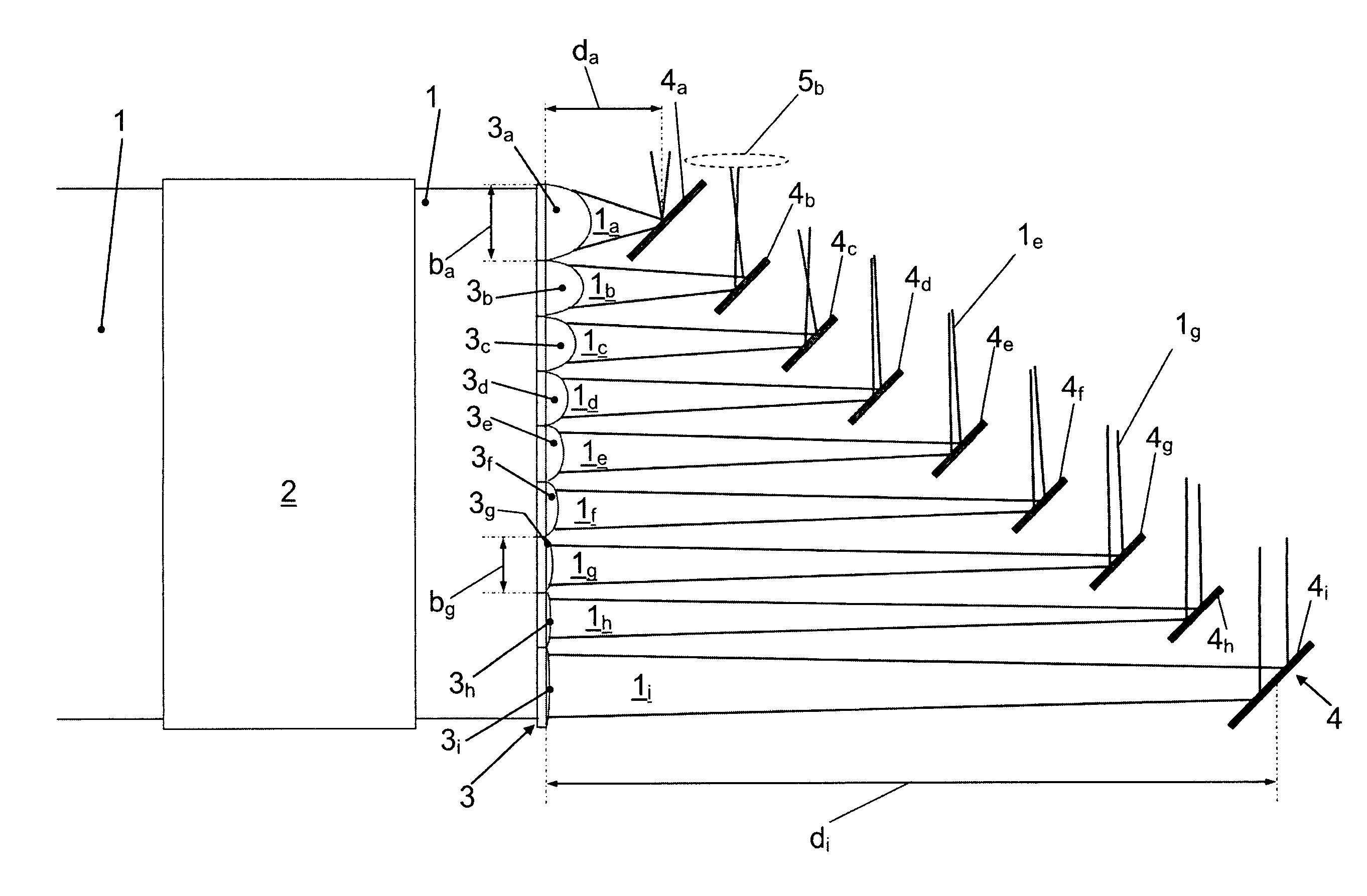Device for splitting a light beam
a light beam and device technology, applied in lasers, laser details, instruments, etc., can solve the problems of unfavorable use of incident light beams, substantial power losses, undesired refraction phenomena, etc., and achieve the effect of effective configuration
- Summary
- Abstract
- Description
- Claims
- Application Information
AI Technical Summary
Benefits of technology
Problems solved by technology
Method used
Image
Examples
Embodiment Construction
[0022]A Cartesian coordinate system is illustrated in FIG. 1 for the purpose of better orientation.
[0023]The device according to the invention is illustrated in FIG. 1. The device is intended to provide for splitting into a number of subbeams 1a to 1i a light beam 1 that is incident in the positive Z-direction, or from the left hand side in FIG. 1, emanates from a high power laser, for example, and is unpolarized, for example. To this end, the device comprises homogenizing means 2 that are indicated merely schematically in FIG. 1. The homogenizing means 2 can have, in the usual way, lens arrays, for example, two cylindrical lens arrays arranged consecutively in the propagation direction Z of the light beam, and Fourier lenses for superimposing the subbeams that have passed through the cylindrical lens arrays.
[0024]If the light beam 1 is to be split into subbeams in only one direction such as, for example, the X-direction in FIG. 1, it suffices to homogenize the light beam 1 with reg...
PUM
 Login to View More
Login to View More Abstract
Description
Claims
Application Information
 Login to View More
Login to View More - R&D
- Intellectual Property
- Life Sciences
- Materials
- Tech Scout
- Unparalleled Data Quality
- Higher Quality Content
- 60% Fewer Hallucinations
Browse by: Latest US Patents, China's latest patents, Technical Efficacy Thesaurus, Application Domain, Technology Topic, Popular Technical Reports.
© 2025 PatSnap. All rights reserved.Legal|Privacy policy|Modern Slavery Act Transparency Statement|Sitemap|About US| Contact US: help@patsnap.com


